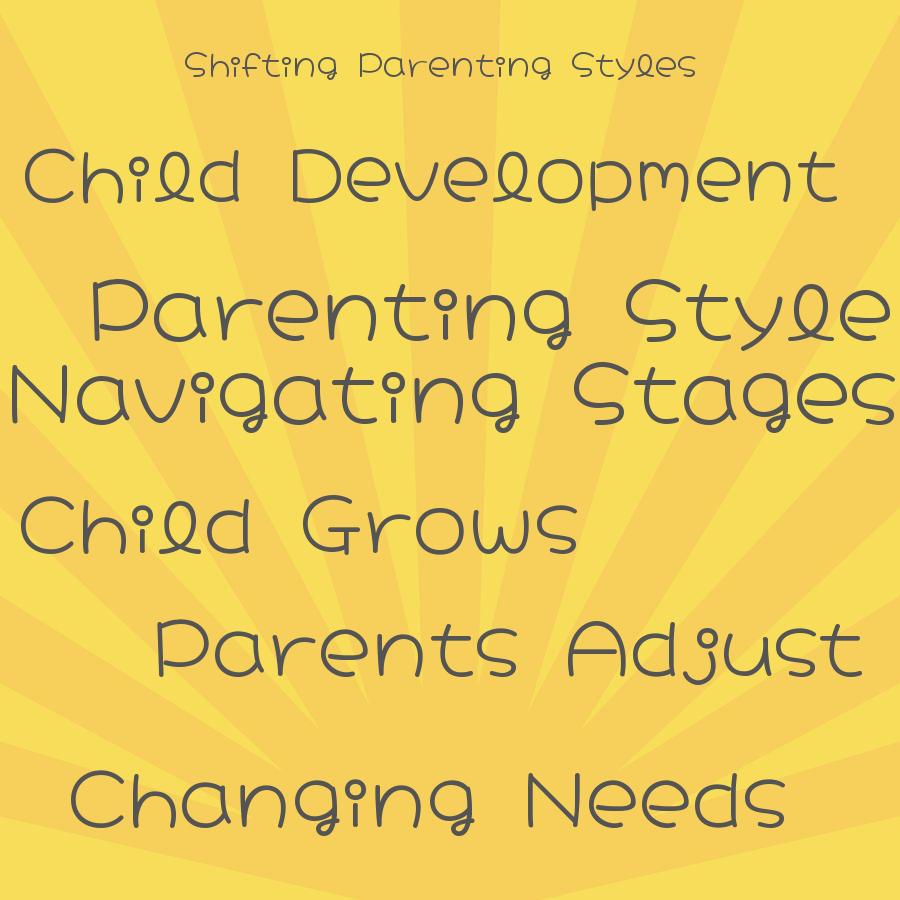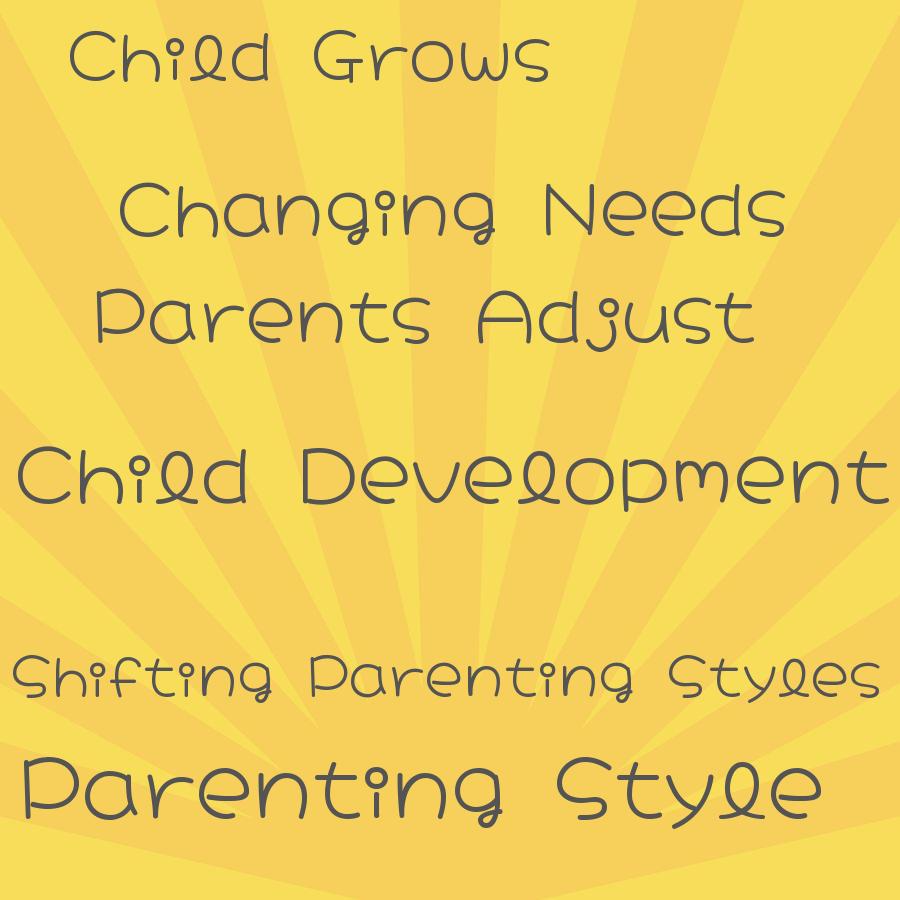Parents adjust their parenting style as their child grows and develops by being attuned to their child’s changing needs, abilities, and temperament. They may adapt their approach to discipline, communication, and involvement based on the child’s age and developmental stage. As children become more independent, parents may shift from a directive style to a more supportive one that encourages autonomy while still providing guidance and structure.
As parents, we all have an innate desire to protect and nurture our children. From the moment they are born, we become their caretakers, guiding them through the ups and downs of life.
But as our children grow and develop, so too must our parenting style adapt.
I remember when my daughter was just a few months old. I was a new mom, filled with anxiety and uncertainty about how to care for this tiny human being.
I read every book I could get my hands on about baby sleep schedules, feeding routines, and developmental milestones.
But as she grew older and became more independent, I realized that my approach needed to change too. It wasn’t enough to simply follow a set of rules or guidelines; I had to learn how to be flexible and responsive to her unique needs.
In this blog post, we’ll explore some of the ways that parents adjust their parenting style as their child grows and develops. From setting boundaries to fostering independence, there’s no one-size-fits-all approach when it comes to raising kids!
Here You Will Learn:
Understanding Child Development


As parents, it’s important to understand that our children are constantly growing and changing. From infancy to adolescence, each stage of development brings new challenges and opportunities for learning.
One key aspect of adjusting our parenting style is understanding child development. This means being aware of the physical, cognitive, emotional, and social changes that occur as a child grows.
For example, when my daughter was a toddler she was full of energy and curiosity. She wanted to explore everything around her but didn’t yet have the ability to fully understand danger or consequences.
As a result, I had to be vigilant about keeping her safe while also encouraging her natural sense of wonder.
Now that she’s in elementary school age range – I’ve noticed how much more independent she has become; wanting more privacy with certain things like dressing up on their own or doing homework without assistance from me all the time!
As parents we need not only recognize these developmental milestones but also adjust our parenting style accordingly by providing appropriate guidance at each stage while allowing them space for growth too!
Adapting to Changing Needs
As children grow and develop, their needs change. What worked when they were infants may no longer be effective as toddlers or teenagers.
As parents, it’s important to recognize these changes and adapt our parenting style accordingly.
For example, when my daughter was a toddler, she needed clear boundaries and routines to feel secure. But as she entered her teenage years, I had to learn how to give her more independence while still providing guidance and support.
Adapting our parenting style also means being open-minded about new approaches or strategies that may work better for our child’s current stage of development. It can be challenging at times but staying flexible is key in helping your child thrive.
One way I’ve found helpful in adapting my parenting style is by regularly checking in with my daughter about what works for her now versus what used to work before. This helps me stay attuned with any changes happening within her life so that I can adjust accordingly.
Adapting your parenting style requires flexibility and an openness towards trying new things based on the changing needs of your child over time – this will help you build a strong relationship with them throughout their growth journey!
Shifting Parenting Styles
As children grow and develop, their needs change. What worked for them as infants may not be effective when they become toddlers or teenagers.
This means that parents must be willing to shift their parenting styles over time.
For example, when my daughter was a toddler, I found myself constantly saying “no” to her requests and actions. It felt like the only way to keep her safe and prevent her from getting into trouble.
But as she grew older and became more curious about the world around her, I realized that this approach wasn’t sustainable.
I had to learn how to set boundaries while also allowing room for exploration and discovery. Instead of always saying “no,” I started redirecting my daughter’s attention towards safer alternatives or explaining why certain behaviors were off-limits.
As she entered adolescence, our relationship shifted again. My once chatty child became more reserved; conversations were shorter than before; it seemed like everything was changing so fast! As a parent in this phase of life with your child you have two options: either try harder by pushing them away further or give them space but still let them know you’re there if they need anything at all – even just someone who will listen without judgment!
Shifting parenting styles is an essential part of raising children effectively throughout different stages of development- from infancy through adolescence- because what works best changes along with each new milestone reached by your little one!
Navigating Different Stages
As children grow and develop, they go through different stages that require parents to adjust their parenting style accordingly. From infancy to adolescence, each stage presents unique challenges and opportunities for growth.
During the early years of a child’s life, parents are focused on meeting their basic needs such as feeding, changing diapers or clothes frequently. As they enter toddlerhood and preschool age range (2-5), parents need to start setting boundaries while encouraging exploration in a safe environment.
As my daughter entered elementary school age (6-11), I found myself navigating new territory once again. She was becoming more independent but still needed guidance from me in terms of decision-making skills and social interactions with peers.
Now that she is approaching her teenage years (12+), I am learning how to give her more freedom while also maintaining open communication about important topics like relationships, mental health issues or substance abuse prevention.
Navigating these different stages can be challenging for any parent but it’s important to remember that every child is unique with individual needs requiring tailored approaches by caregivers at each stage of development.
Balancing Freedom and Responsibility
As children grow older, they naturally crave more independence and autonomy. This can be a challenging time for parents who want to keep their kids safe while also allowing them the freedom to explore and make mistakes.
One of the key ways that parents adjust their parenting style is by finding a balance between freedom and responsibility. When my daughter was younger, I would closely monitor her every move, making sure she didn’t wander too far or get into anything dangerous.
But as she got older, I realized that I needed to give her more space to explore on her own.
Of course, this doesn’t mean letting go completely; it’s important for parents to set boundaries and guidelines so that children understand what is expected of them. For example, we have rules about screen time limits during the week so that my daughter has enough time for homework and other activities.
At the same time though, giving kids some degree of control over their own lives can help build confidence and self-esteem. As my daughter has gotten older (she’s now in middle school), we’ve started involving her in decisions about things like extracurricular activities or family vacations – giving her a say in these choices helps foster independence while still maintaining our role as responsible adults guiding our child through life’s ups-and-downs.
Finding this balance isn’t always easy – there are times when it feels like you’re walking a tightrope between being too controlling or not involved enough! But with patience and practice (and lots of communication), most families find ways to strike an appropriate balance between freedom & responsibility as their child grows up before your eyes!